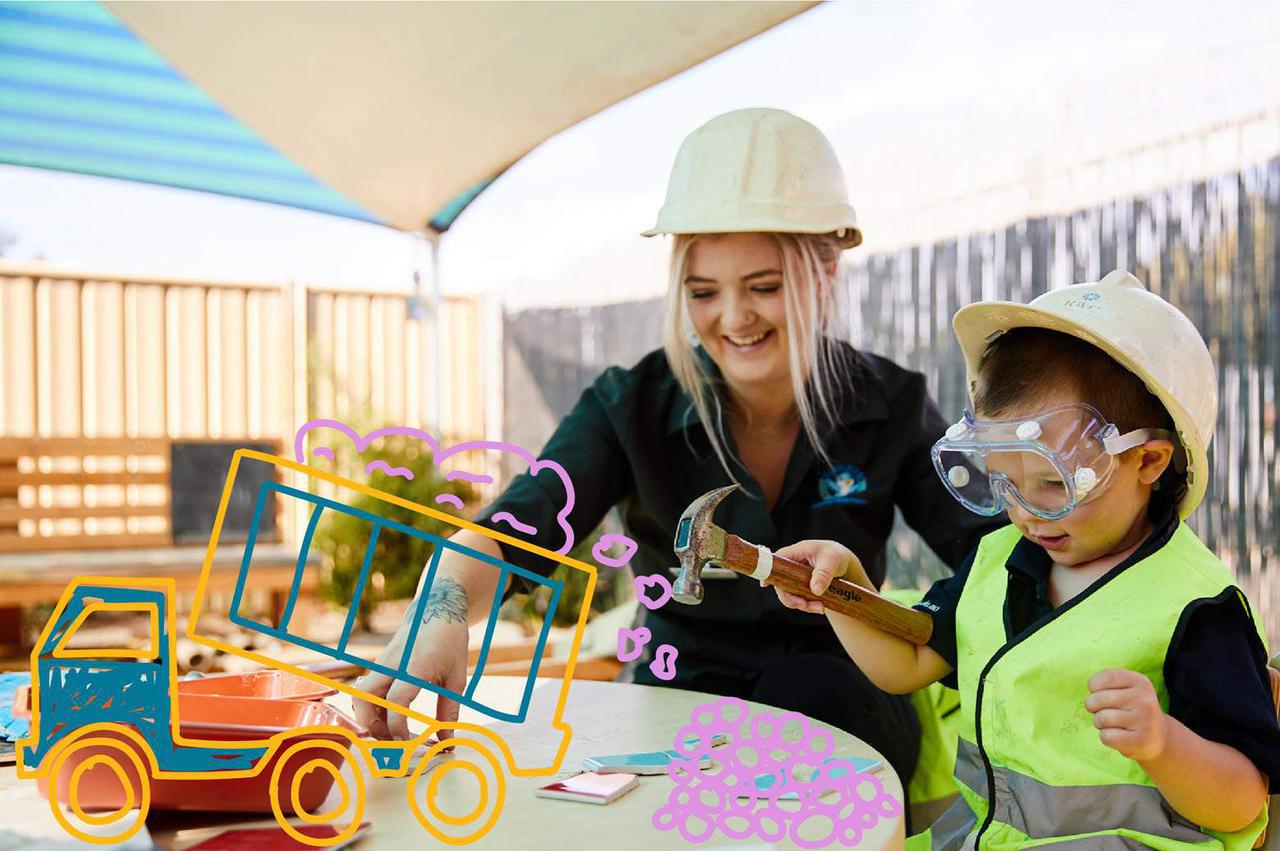
Whether your child care centre is a new build or an old favourite, it needs to have structural integrity, and there’s a whole raft of building standards and physical environment requirements that ensure your tyke will be safe on-site and given a solid foundation for learning and play.
All building work in Australia is covered by a Building Code, and approved child care centres are regulated by the National Quality Framework (NQF), which means they must comply with the National Law and Regulations, and are assessed and rated against the National Quality Standard, which includes a Quality Area focused on physical environment.
Your service is obliged to provide safe, suitable and supportive premises, so let’s look at the nuts and bolts of things.
Do child care centres have to be built lawfully?
Yes! Child care centres need to get service approval from their regulatory authority before they can operate, and as part of the application process, centre-based services must provide copies of:
- Building plans for their proposed premises
- The planning permit for their proposed premises (if relevant)
- Proof that their premises comply with the relevant building requirements under law (e.g. a certificate of final inspection or building certificate).
Whether a centre is built from scratch or repaired, its work still has to comply with the building standards for early childhood services, and this is where the Building Code of Australia comes in.
What is the Building Code of Australia?
The Building Code of Australia sets out minimum requirements that all commercial and residential building work must comply with to ensure safety, health, amenity, accessibility and sustainability.
For early childhood centres, there are specific building standards relating to:
- Egress (aka escape routes)
- Fall prevention barriers
- Area per person (in m2)
- Window safety and sill height
- Natural light
- Fencing and barriers
- Kitchen and laundry facilities
- Toilet and washbasin numbers
Although the Code applies nationally, each state and territory has its own variations, additions and deletions. When it comes to child care, Tasmania has a specific section covering early childhood centres and school-aged care facilities, and there are Victoria-specific rules around things like facilities and floor space.
You can read the Code to drill down further, and if you’re wondering what the National Construction Code is, then it’s the Building Code of Australia and Plumbing Code of Australia combined.
A certifier or builder will assess building work against the Code before issuing the certificate a service needs for its approval application.
What regulatory requirements are there?
Child care is a serious responsibility, and services have to comply with numerous legislative requirements before they’ll be approved by their regulatory authority – with outdoor and indoor spaces, buildings, fittings and fixtures all playing a part.
Regulations 103 to 115 set out the physical environment requirements for centre-based services, covering:
- Premises, furniture, equipment and materials
- Fencing of outdoor spaces
- Laundry/toilet and hygiene facilities
- Free space inside and outside the service
- Ventilation and natural light
- Administrative space
- Nappy change facilities
- Natural environment and shade in the outdoor space
- Design of the premises to facilitate supervision of children at all times
The Building Code of Australia is subject to each state or territory’s legislation, so it can be overridden by the Regulations, and the regulatory authority can impose extra measures or conditions on a centre when giving it approval. For example, the centre might have to install more toilets than the Building Code requires to ensure ‘busters’ have safe and easy access to them.
What does the National Quality Standard say about physical environment?
A service’s National Quality Standard rating tells you how well they rate in seven quality areas, and Quality Area 3 is all about physical environment.
As a benchmark, services should provide a safe and suitable physical environment that’s appropriately designed, fit for purpose, and well-kept. It should also be inclusive, have resources to support play-based learning, and be environmentally responsible.
The National Quality Standard is part of the Regulations, and all of the above standards and requirements mean that child care centres need to be solidly constructed and thoughtfully designed to provide care that’s approved, well-rated, and beneficial for kids.
What Building Code changes are proposed for early education?
The Building Code of Australia gets updated as needed and there are moves afoot to change some provisions for early childhood centres in high-rise buildings.
The changes relate to fire safety, escape routes and the classification of child care centres that are in mixed-used buildings, spread over one level, or haven’t got direct access to a road or open space. This document provides a good wrap-up on page 17.
Environment and ethos matters when you’re looking for child care, and Toddle can help you find the right centre for your child.
To give them a great foundation for life, start your child care search here.